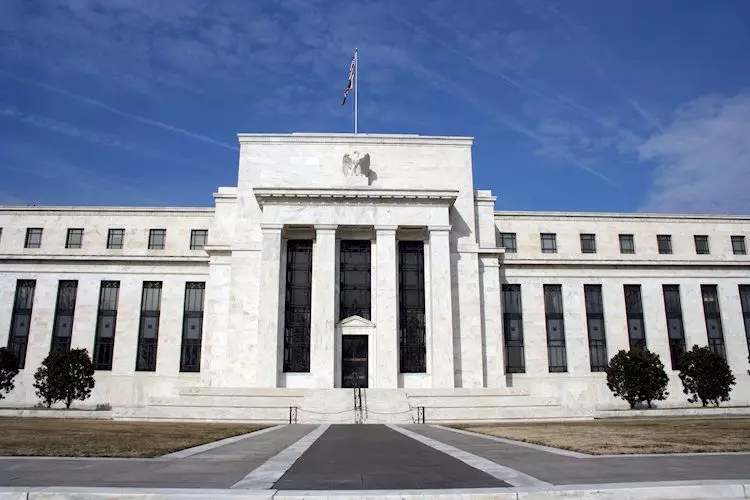In recent discussions, Federal Reserve Bank of Minneapolis President Neel Kashkari emphasized the relative strength of the U.S. economy while addressing persistent inflation challenges. The resilience shown amid escalating rates illustrates a noteworthy recovery, signaling that the nation’s economic landscape is not as bleak as some may suggest. However, Kashkari asserts that the journey toward sustainable inflation rates is far from complete, indicating that the Fed is not yet “all the way home.” Such an acknowledgment creates an interesting juxtaposition: while the economy exhibits robust characteristics, underlying issues still warrant significant attention.
Kashkari’s remarks indicate that the Federal Reserve’s commitment to achieving a long-term inflation goal of 2% remains steadfast. To attain this aim, additional evidence is essential before considering further interest rate reductions. Economists and policymakers alike will be closely watching indicators that suggest whether inflation is truly on a downward trajectory or if further constraints are necessary.
Impact of Immigration Policy on Business
One of the more nuanced topics discussed by Kashkari was the potential impact of immigration policy on the labor market and, consequently, economic stability. The specter of deportations creating workforce shortages presents a critical challenge for businesses and could disrupt economic momentum. The primary concern centers on how these businesses and Congress will navigate the delicate balance between labor needs and immigration policies. The unpredictability surrounding immigration legislation adds another layer of complexity to the ongoing considerations the Federal Reserve must weigh.
Ultimately, the conversation surrounding immigration dovetails with economic stability, amplifying the need for cohesive collaboration between the business community and lawmakers. Establishing a stable operational environment free from workforce uncertainties is crucial for sustained economic health.
Long-Term Fiscal Responsibilities
Another vital aspect of the discourse has been the escalating federal debt and deficit levels. While immediate concerns may focus on inflation and employment rates, the long-term consequences of mounting national debt cannot be overstated. At some point, these fiscal issues will need to be addressed comprehensively. The complexity of addressing fiscal irresponsibility is compounded by the political environment, which is often fraught with divergent viewpoints on spending, taxation, and economic growth strategies.
The introduction of a one-time tariff could theoretically raise goods prices temporarily without leading to sustained inflation. However, any such measure must be scrutinized for potential retaliatory actions from international trade partners, which could unleash an unpredictable wave of economic consequences.
The Federal Reserve possesses a dual mandate: to maintain price stability while fostering full employment. This delicate balancing act is navigated primarily through interest rate adjustments—a tool that can either stimulate or slow down economic activity based on prevailing circumstances. When inflation rises too steeply beyond the desired 2% threshold, the Fed typically opts to increase interest rates, thus curbing consumer spending and investment, which in turn strengthens the U.S. dollar. Conversely, if faced with high unemployment or falling inflation below the target, it may opt for rate reductions to invigorate the economy, leading to a depreciation of the dollar.
The Federal Open Market Committee (FOMC) plays a pivotal role in these monetary decisions, convening eight times a year to assess real-time economic conditions. Comprised of twelve key officials, the FOMC deliberates over the intricate dynamics between interest rates and economic indicators. As each decision unfolds, it reflects both the intricacies of economic data and evolving market sentiments.
In extreme circumstances, when traditional policy measures fall short, the Fed can turn to unconventional strategies such as Quantitative Easing (QE) and its reverse counterpart, Quantitative Tightening (QT). These tactics allow the Fed to inject or withdraw liquidity from the financial system, respectively. QE played a crucial role during the aftermath of the Great Financial Crisis, aimed at revitalizing markets by purchasing bonds and increasing money supply. While effective, such policies have potential side effects, including a weakened U.S. dollar.
Conversely, QT restricts the liquidity supply by ceasing bond purchases, thereby reinforcing the dollar’s strength. The choice between QE and QT illustrates the challenging decisions the Fed must make—choices that resonate beyond immediate economic indicators and affect global financial perceptions.
As the Federal Reserve navigates these complexities amidst a backdrop of relative economic strength and uncertainty around inflation, businesses, policymakers, and consumers will continue to watch developments closely. The interplay between fiscal policy, labor market dynamics, and monetary strategy will dictate not just the economic trajectory but also the broader implications for U.S. economic standing on the global stage.

